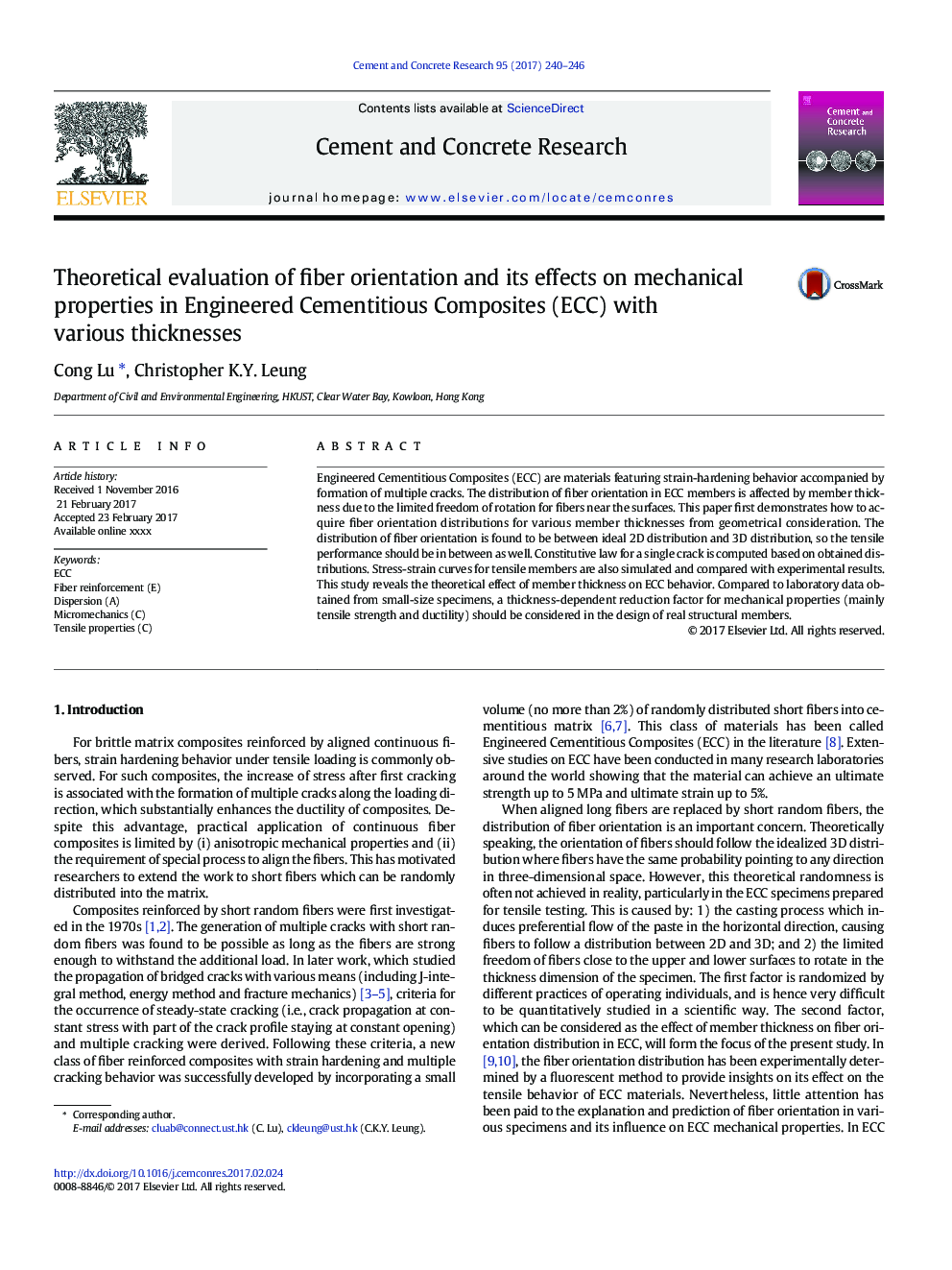| Article ID | Journal | Published Year | Pages | File Type |
|---|---|---|---|---|
| 5437072 | Cement and Concrete Research | 2017 | 7 Pages |
Abstract
Engineered Cementitious Composites (ECC) are materials featuring strain-hardening behavior accompanied by formation of multiple cracks. The distribution of fiber orientation in ECC members is affected by member thickness due to the limited freedom of rotation for fibers near the surfaces. This paper first demonstrates how to acquire fiber orientation distributions for various member thicknesses from geometrical consideration. The distribution of fiber orientation is found to be between ideal 2D distribution and 3D distribution, so the tensile performance should be in between as well. Constitutive law for a single crack is computed based on obtained distributions. Stress-strain curves for tensile members are also simulated and compared with experimental results. This study reveals the theoretical effect of member thickness on ECC behavior. Compared to laboratory data obtained from small-size specimens, a thickness-dependent reduction factor for mechanical properties (mainly tensile strength and ductility) should be considered in the design of real structural members.
Related Topics
Physical Sciences and Engineering
Engineering
Industrial and Manufacturing Engineering
Authors
Cong Lu, Christopher K.Y. Leung,
